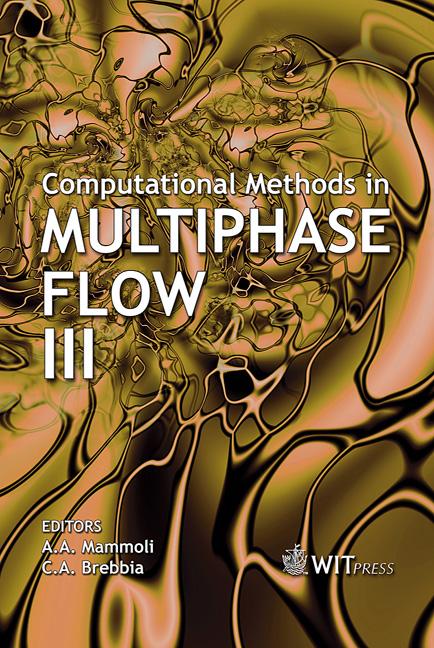Development Of Low-diffusion Flux-splitting Methods For Gas-liquid Flows With Interface Propagation And Phase Variation
Price
Free (open access)
Transaction
Volume
50
Pages
16
Published
2005
Size
806 kb
Paper DOI
10.2495/MPF050301
Copyright
WIT Press
Author(s)
D. Mao, A. D. Harvey & J. R. Edwards
Abstract
The development of a class of low-diffusion upwinding methods for computing gas-liquid flows with interface propagation and phase variation is presented in this work. An artificial compressibility/low-Mach preconditioning strategy is developed for a hyperbolic two-phase mixture system. The eigenvalues of this system are used to devise extensions of the low-diffusion flux-splitting scheme (LDFSS) method that provide high resolution capturing of interface propagation and phase variation in the gas-liquid system. These schemes are utilized in a polymer injection molding application involving the flow and growth of both chemical and physical foams. In physical foaming processes, a gas is dissolved into the polymer as a physical blowing agent and at a specified temperature and pressure creates foams. Once the dissolution is completed, either the pressure is reduced or the temperature is increased so as to liberate the dissolved gas to create foam. In chemical foams, the blowing agent is created by a chemical reaction as a dissolved gas which vaporizes into a bubble phase creating foam. The foam expansion rate is determined by fundamental physical parameters such as diffusion coefficient, bulk viscosity, bubble radius, bubble number density and dissolved gas concentration at the bubble edge. Foam growth dynamics is modeled using an influence volume approach which is fully coupled into a two-phase (gas-liquid) Navier-Stokes solver. The resulting three-phase foam flow formulation (polymer liquid mixture, foam bubble gas and air phases) provides polymer/air interface tracking as well as quantitative bubble scale and macro-scale flow information. Bubble scale information includes bubble number density and bubble radius; and macro-scale information includes bubble void fraction, mixture mass density and temperature, liquid species mass fraction, and velocity distribution. The method is demonstrated on both a continuous (flow-through) application and a semi-batch (or closed) foam flow system. Keywords: upwind discretisation, time-derivative preconditioning, interface tracking, phase variation, physical foam, chemical foam, bubble growth, influence volume approach.
Keywords
upwind discretisation, time-derivative preconditioning, interfacetracking, phase variation, physical foam, chemical foam, bubble growth,influence volume approach.





